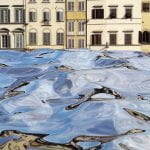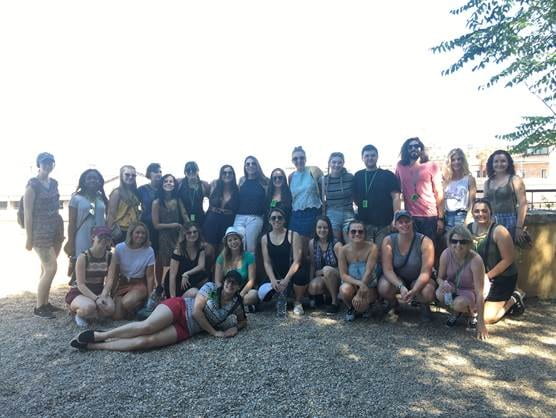
Day 9: Pitti Palace and Boboli Gardens
Student Author: Marah Friedman
There’s no flood in Florence, not in this picture, anyways. Instead, this is just a stunning view atop one of the many silver sculptures displayed at the Pitti Palace. When you initially approach the Palace you will notice a beige stone building with arched windows. The Pitti Palace houses multiple museums including the gallery of modern art and the costume gallery. Inside, you will find an array of Italian art expressed through paintings and sculptures. The most breathtaking view, however, comes from the Boboli Gardens.
The Boboli Gardens consist of precisely sculpted bushes that establish pathways through which you can walk. As you proceed through the gardens you pass a large fountain of an angry man with a pitch fork. This sets an inaccurate stage for what you will experience as you walk through the gardens. Continuing up the steep hill, you will reach a lookout. Here you will experience a Florence that does not exist on the streets. Florence, being one of the biggest cities in Italy, has a very active atmosphere. The streets of Florence flood with young adults that move at a fast pace and it can sometimes lack peacefulness. The streets are theoretically flooded, flooded with activity. If you have managed to make it to the peak of the gardens, look just past the fig trees. You will be treated to a view of the city of Florence. This perspective is quite different than that of the streets. It is peaceful and inactive. You cannot see the activity, but rather you see rooftops of the Florence community. If you let your eyes travel just past the city, you will see shadowed mountains of the country side. Suddenly, Florence is peaceful. There’s no flood in Florence, not when you are looking at it from the Boboli gardens.
Day 9: Santa Croce
Student Author: Megan Boris
Santa Croce church is a Roman Catholic Church located in Florence, very close to the Duomo. Because there are many famous, illustrious Italians buried in the church, the church seems to have grown from its original purpose of religious worship to include the admiration and remembrance of these individuals. Some of the famous Italians buried here include Michelangelo and Galileo. In addition to the large nave of the church, there are smaller offset chapels which include the Medici Chapel where the powerful Florentine family worshipped in private. According to a worker that I had a brief discussion with, legend has it that the church was built by St. Francis himself, and Santa Croce is popular among Italians for that reason and for the many tombs that I previously mentioned.
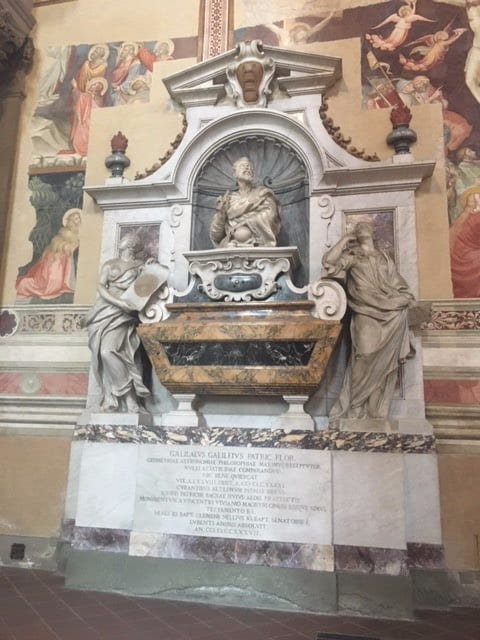 This church seemed to perfectly mesh in the mix of the other Roman Catholic Churches we have seen in Italy so far. The amount of rich marble, opulent gold, and intricate decoration throughout the tombs and around the altar is almost intimidating and breathtaking to experience. It is a stark reminder of how much power the Catholic Church held during the Gothic and Renaissance period. While Catholicism is supposed to be about helping the poor and embracing humility, the over exaggerated and expensive decoration of Italian churches like Santa Croce shows how corrupt and politicized the Catholic Church was at that time.
This church seemed to perfectly mesh in the mix of the other Roman Catholic Churches we have seen in Italy so far. The amount of rich marble, opulent gold, and intricate decoration throughout the tombs and around the altar is almost intimidating and breathtaking to experience. It is a stark reminder of how much power the Catholic Church held during the Gothic and Renaissance period. While Catholicism is supposed to be about helping the poor and embracing humility, the over exaggerated and expensive decoration of Italian churches like Santa Croce shows how corrupt and politicized the Catholic Church was at that time.
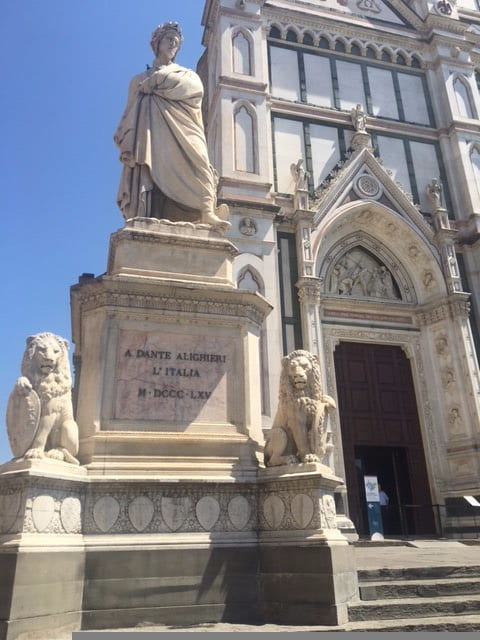
While it was difficult for me to understand the opulence of the church, I also gained an appreciation for those individuals who were visiting for purposes of worship. While I am personally not religious, these Pilgrims travel so far to visit Italian churches, and such dedication to God can only be admired and venerated. My Grandmother was Roman Catholic, and I had the chance to light a candle for her in Santa Croce during my visit. Being able to light this candle was a moment that I will remember forever, because I had the opportunity to visit this legendary place of worship, and such travel and support from my parents would not have been possible without her support for my father. I hope that she is looking down from Heaven and taking it all in with me.
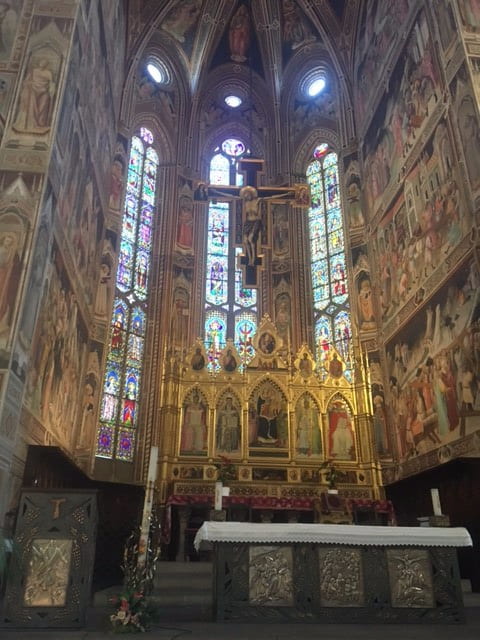
Day 9: Florence Walking Tour
Student Author: Julia McCarl
Last night we took a walking tour by night. Our tour guide’s name was Bernardo. He was born and raised in Florence, his “beautiful city.” His tour was easily my favorite walking tour we’ve been on since we arrived in Italy. He shared that Florence during the years of 1290 – 1500 was one of the biggest cities in the world! It also held immense wealth and power due to the large number of bankers and merchants that lived in the city.
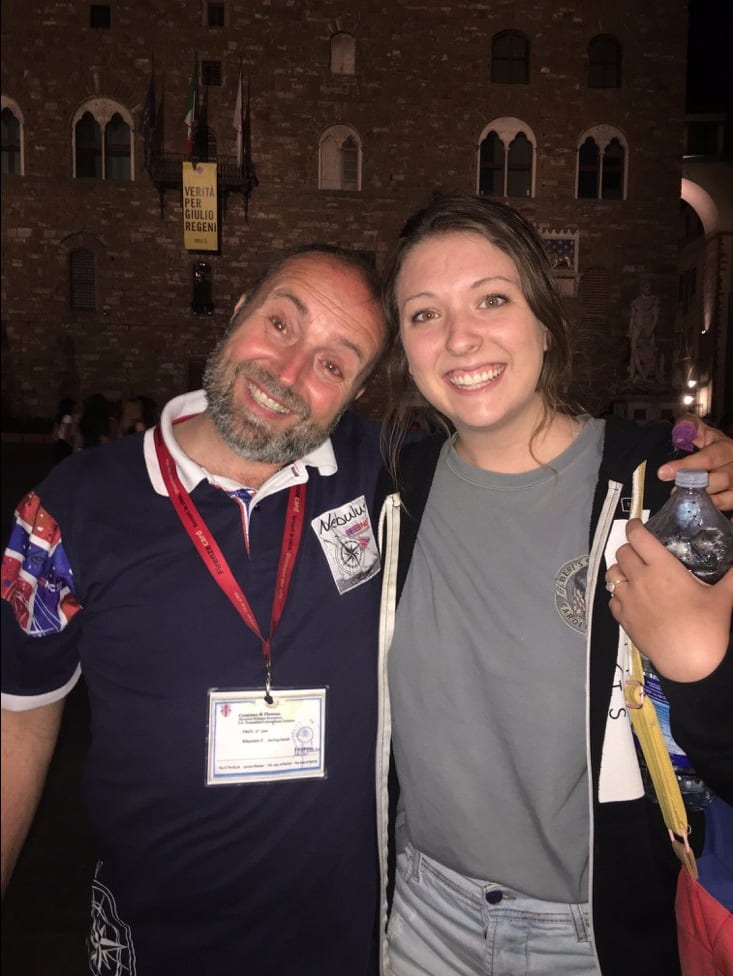
My favorite part of Bernardo’s tour though was how he emphasized the role that competition played in the great works of art you see in the city today. This competition was driven between the five richest families in Florence at that time. Each of them wanted to show their greatness and dominance by having the tallest, widest, grandest, etc. castle or dwelling. So these families called for outside help from the greatest artists of the time, including Michelangelo, Rafael, etc. Each of these artists also had egos of their own and competition began between them as well. This is the reason you see such a plethora of unique, beautiful pieces of art and architecture in Florence.
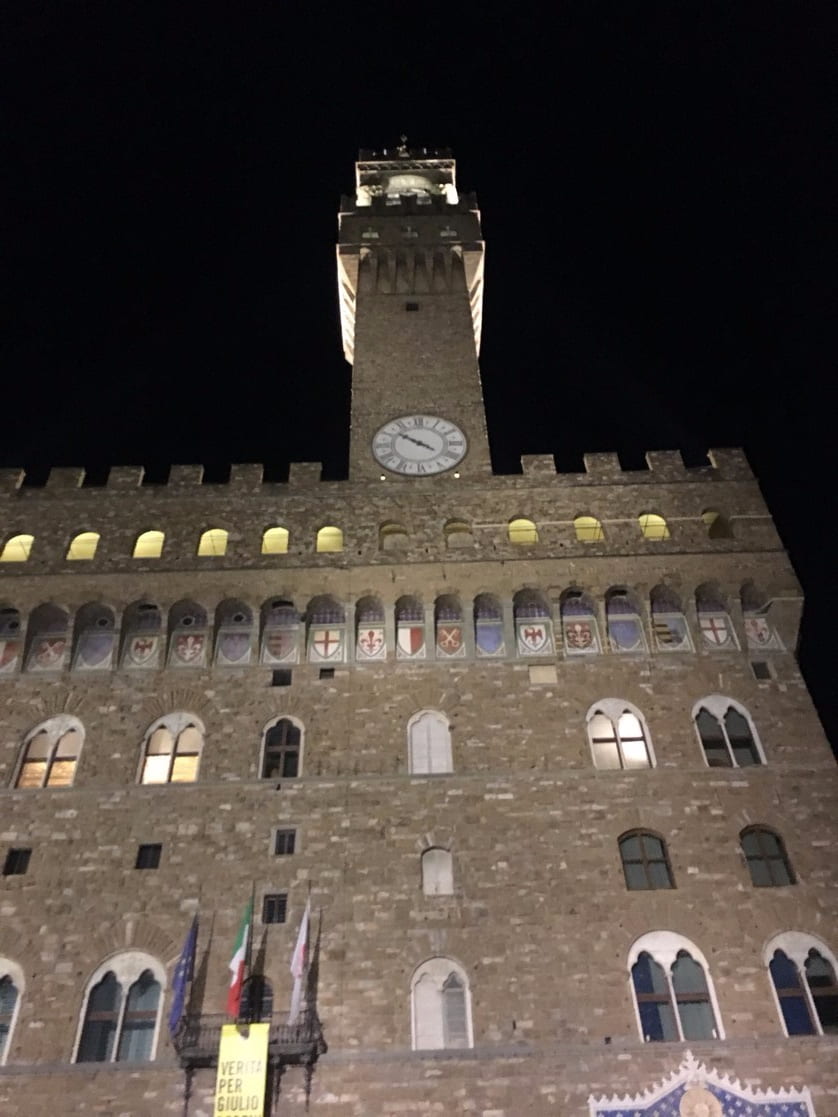
I loved that Bernardo emphasized competition when he talked about the history of Florence. He tied all of the facts to psychology when he did this. Competition is so key when it comes to development and moving forward. An example would be the Great Race to Space. Who knows if we would have ever gotten there, and so quick, if it weren’t for competition. It is a key to survival and built into the core of our psyche.
Another thing that changed my perspective was learning that Rome was not always the strongest or most powerful city in Europe. That shocked me, as I had never heard anything about Florence’s great power and achievements before! Florence is an amazing city with a very interesting past and I am very grateful to have learned about it!
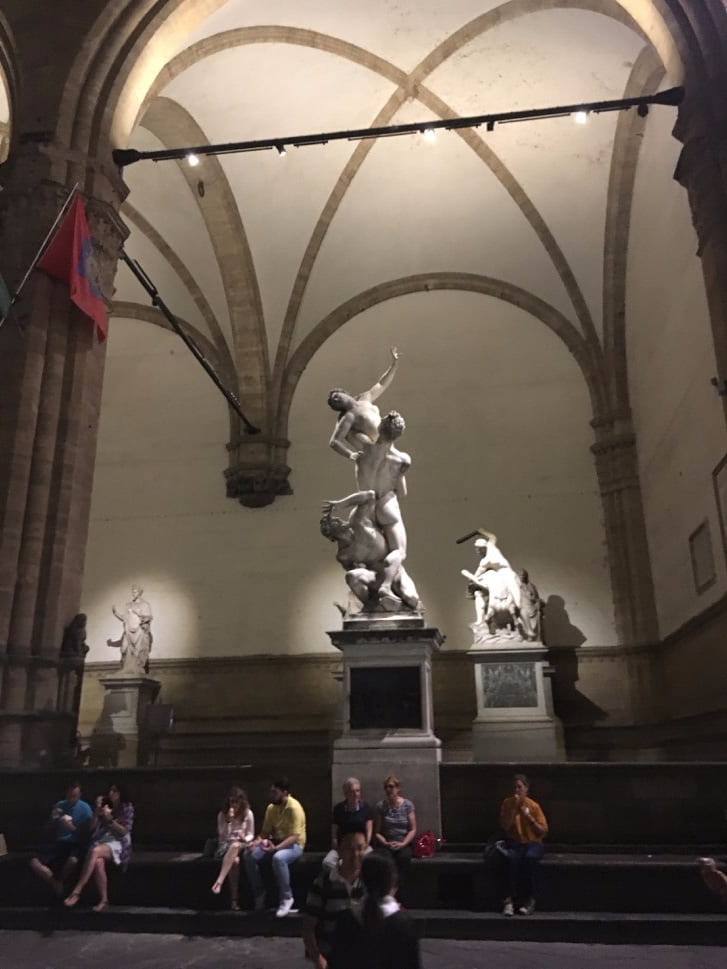
Day 10: Free day in Florence
Student Blogger: Hannah Mueller
Today on my free day in Florence I went to Galleria dell’Accademia to see the statue of David by Michelangelo and went shopping, which was more culturally informative than I ever thought. Today is the first Sunday of the month. This means that all museums are free the entire day! This in itself is very telling of what is culturally valued. Italians value the arts and power of their past. Proudly displayed are painted, sculpted, and built works of artistic and architectural genius by some of the most notable artists of all time, such as Leonardo da Vinci and Michelangelo. The pride for these pieces is seen as they allow all to enter and view at no cost the first Sunday of each month.
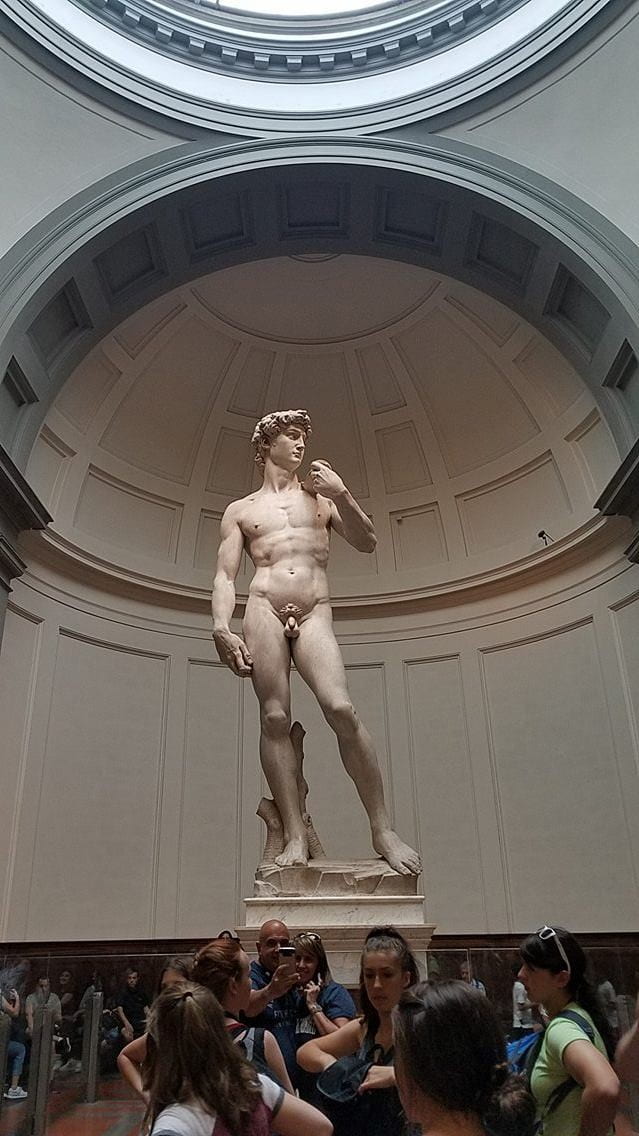
As you can imagine, the line to get into these museums can get quite long. Lucky for us, we arrived just in time to beat the line. The long lines again show the value of these works. Within the museum, beyond David are works of art dating as far back as 1336 through the Renaissance, including a musical instrument museum. Knowing a tiny bit about instruments, I was excited to find if they had a Stradivari violin, constructed by one of the most prized violin makers of all time. They did have one—well, actually three. Personally, they were a joy to see and something I had always hoped to see. These violins look to be nothing special, but to the ear the sound produced by these solid wood bodied instruments handcrafted with precision beyond its time is nothing short of perfection. The value and pride of this culture is expressed as these violins, alongside other magnificently crafted instruments, are displayed in the same building as David. These violins that are considered the “holy grail” find weren’t cashed in on but rather proudly displayed as a pride of Italy, where Stradivari is from.
As we entered the hall at the end of which David is housed, we see many art viewers from many parts of the world gathered to see this giant master piece. In awe and in a state of excitement many blankly stare up at the piece. I watched as people patiently and politely took turns taking pictures with the statue and simply looking at it up close. For a moment as we were all friendly and mindful of others taking photos and looking at the statue. In this museum, we were able to see some of the most magnificent works produced in Italy. Pieces that are literally priceless were made available at no cost because of the collective pride of the Italian culture.
We also went shopping today and the first place we went to shop today was a little leather shop just outside of the Duomo. After a confusing walk there, we stepped into this little shop located inside of a Renaissance-era building. We were greeted by the owner, an artisan himself. He was friendly, happy to speak with us, and very proud of the pieces in his shop. Though he is proud, he was also very humble. You could see and hear the excitement and passion as he told us of the history of the building and his company. The part he was most excited to tell us about was their Astronomica collection on which the Zodiac calendar by Galileo was printed. He was particularly proud of this collection as they had to get special permission to use it. It took him two years and a lot of paperwork to obtain the ability to print this pattern. He went on to tell us how part of the two-year process was giving them example swatches to approve or deny. This showed the importance to him to be able to represent this work of art in his own form of art.
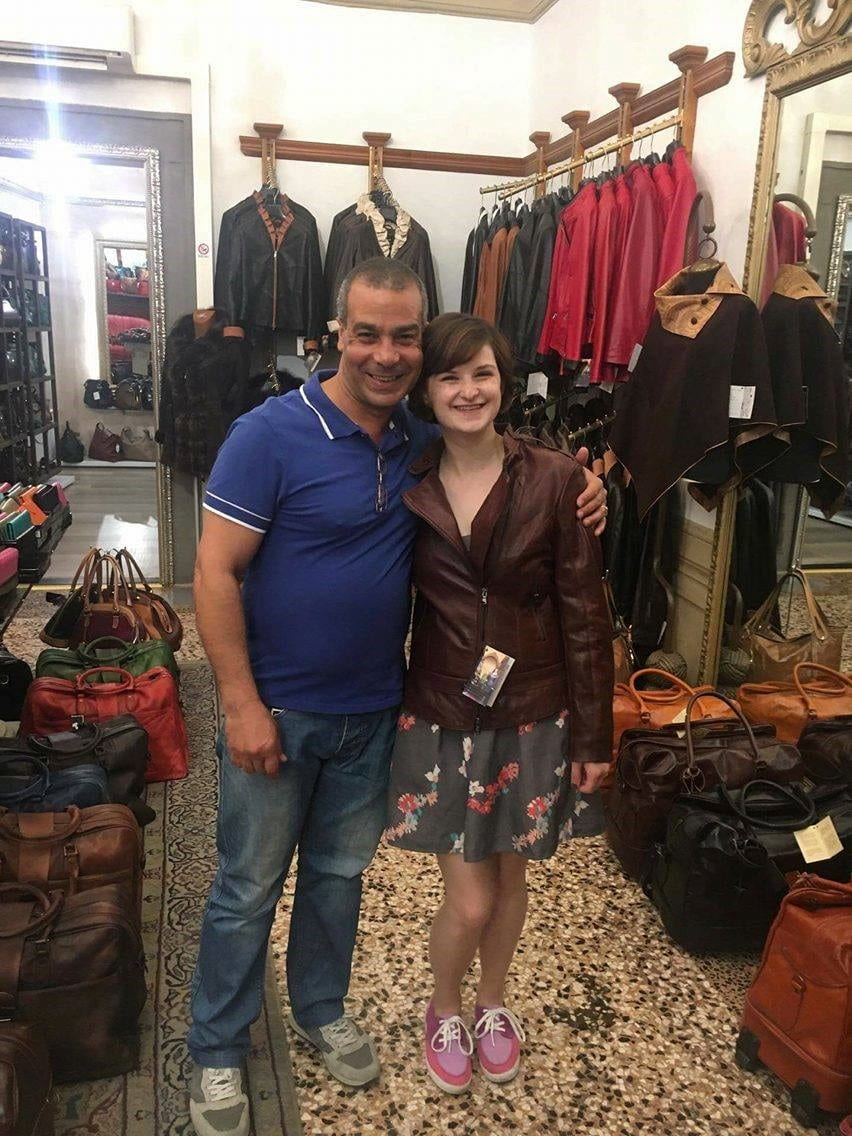
What has become increasingly more apparent as I ventured off into Florence on this free day is the immense amount of pride the citizens hold for their country and for each city individually. This culture is clearly one of pride and consideration for their art, history, architecture, products, and foods.
Day 11: Guest Lecture with Dr. James Lynch
Student Blogger: Julia Tenbus
“Feel stupid in Italian” was the advice Dr. James Lynch gave us on how to engage in Italian culture. He explained that you have to be comfortable with feeling stupid if you want to fully immerse yourself into the culture, especially with the language. Dr. Lynch spoke with us about what keeps Italy going and not just how to order food in Italian! Italy is a fairly young country as a republic, which can explain a lot of unrest and unemployment throughout the country. The overall unemployment rate in Italy is about 11% and youth unemployment is about 44.7% which has affected the culture drastically. The youth are staying with their parents for longer and getting married later because they are in need of financial stability. Most Americans think individuals in their early to mid 20s will leave home as soon as possible, but in Italy there is no stigma associated with staying home.
Somehow, Dr. Lynch said, the Italian society still survives even though those living below the poverty line is about 29.9%. This is compared to America’s less than 5% living below the poverty line. Italy’s statistics surprised both Dr. Lynch when he first moved to Italy and our class. Personally, I couldn’t figure out how Italy survives with so many people unemployed and/or living under the poverty line. Dr. Lynch discussed a lot about how these wages influence a “dark economy”. This is usually a reference to the mafia in Italy. An example may be if a security guard is offered an extra month’s pay to leave a gate open one night and say nothing; many are inclined to take it and secretly assist the mafia while just trying to provide for their family. Another tactic used by the mafia is a pizzo. This a kind of protection money. You pay the mafia and nothing bad will happen to your business. An underlying fear of the mafia is ever present for a lot of Italians.

The mafia however isn’t in complete control of the economy. Dr. Lynch then proceeded to explain that the economy is driven by three things. First is industry. We all know the name brands from Italy like Fiat, Gucci, Ferrari and many more. These companies bring a lot of money into the country and all affect Italian culture. Around the world when we see the signature “Made in Italy” we feel that the product has quality. He then explained that agriculture and tourism are second and third for driving Italy’s economy. We have already experienced the tourism all over Italy, but we are excited for the adventure of going to places like Fattoria di Maiano where we’ll learn all about the growth and production of olive oil.

